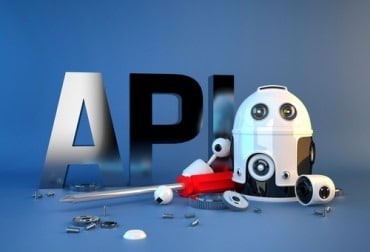
Continuous merge is the next step forward in the evolution of software development, building on the promises of CI/CD.
The beauty of today’s software development lifecycle is that it often goes unnoticed. Take a moment to think about it — it might be hard to remember the last time your favorite application or software updated. You can thank the evolution of SaaS, continuous integration and continuous development (CI/CD) for this seamless experience.
The next evolution in software development, though, lies within continuous merge, which will enhance the CI/CD process even further. Continuous merge prioritizes practices that optimize the pull request (PR) or merge request (MR) merge path for even more seamless software delivery.
Understanding CI/CD and Its Challenges
The Agile Manifesto revolutionized how engineering teams approached software development in the early 2000s. Its tenets encouraged teams to prioritize flexibility and agility, and consequently, developers moved beyond the pain of code freezes spanning weeks and customer feedback loops spanning upwards of a year. About 10 years later, software development evolved one step further with the introduction of CI/CD, which allowed for quicker software delivery. As customers pushed for more features at a faster pace, these developments became not only helpful but necessary.
Engineering teams flocked to CI/CD because it provided a solution to the software delivery problem, enabling more time for ideation and building, helping developers detect bugs earlier, offering a more dependable delivery pipeline and speeding up the customer feedback loop. While these benefits have advanced software development by leaps and bounds, the adoption of CI/CD hasn’t solved all of the development world’s problems.
We still see widespread issues regarding the ease and speed of code merges, mainly over pull requests and merge requests, often referred to as simply PRs. The data science team at my company reviewed extensive data — over 733,000 PRs and 3.9 million review comments across 26,000 developers — and identified that PRs are one of the biggest obstacles encountered by engineering teams during the development lifecycle. On top of that, when PRs languish in review cycles, engineering teams run the risk of losing context. Time and distance from when something was implemented make it extremely difficult to address bugs adequately and can lengthen the development cycle even further.
The Emergence of Continuous Merge
This is where continuous merge comes into play. With continuous merge, engineering teams can automate the classification of PRs and optimize the path to merge, increasing both velocity and quality. By creating pre-merge workflows that focus on custom criteria for PR reviews rather than a one-size-fits-all approach, organizations can speed up the path to merge and create a smoother software delivery lifecycle. Continuous merge is more than just a set of practices, it’s a culture.
See also: The Role of Continuous Software Delivery in Digital Transformation
The Benefits of Continuous Merge
Continuous merge has several notable benefits, including:
- An uptick in efficiency — Continuous merge encourages automation to work in the developer’s favor by intelligently automating the approval of safe changes, review assignments and change requests. This function enables developers to focus on innovation rather than manual review and merge tasks.
- Improved quality — Continuous merge drives quality by defining rules around the PR process, creating more exhaustive reviews. As a result, developers face fewer bugs and compliance issues.
- Opportunity for learning — Continuous merge sets engineering teams up for continuous learning. As they standardize merge processes and workflow automation, organizations will see widespread adoption of best practices. Additionally, continuous merge encourages developers to share codebase knowledge with their team, eradicating informational silos.
- Organizational agility — Businesses win when they’re faster and more effective than their competitors. It’s as simple as that. When your development practices are optimized for a rapidly changing market and evolving customer needs, you’ll have a clear competitive advantage.
Adopting Continuous Merge in Your Organization
I would love it if engineering leaders could snap their fingers and create a culture of continuous merge instantly. Luckily, encouraging the adoption of a continuous merge mindset only takes a few more steps.
Step 1: Establish a set of merge standards
By establishing a set of merge standards, your team can implement in code their methodology on how code ships through “if this, then that” guidelines. I like to approach merge standards from two different angles: merge standards for quality and merge standards for efficiency. Merge standards addressing quality include steps like flagging the use of deprecated components, or ensuring deeper review on changes to sensitive code. Merge standards addressing efficiency could be steps such as ensuring changes are as minimal as possible or automating safe change merges.
Step 2: Implement the merge standards in your organization
The best place to get started with continuous merge is gitStream. gitStream allows you to implement merge standards by codifying them to automate the classification and routing of your changes, encapsulated in a PR. Your team will experiment and iterate on their new merge standards, but workflow automation with gitStream will minimize the hours it takes to apply them to your processes.
Step 3: Assess and update
Just like anything in business, merge standards can (and should) evolve. That’s why it’s important to assess and update your standards on a regular basis. I recommend doing so at least every 2 to 3 months.
The Future of CI/CD Lies With Continuous Merge
Continuous merge is the next step forward in the evolution of software development, building on the promises of CI/CD. Now is the time to encourage a culture of continuous merge in your engineering organization if you want to remain a leader in your industry.





























